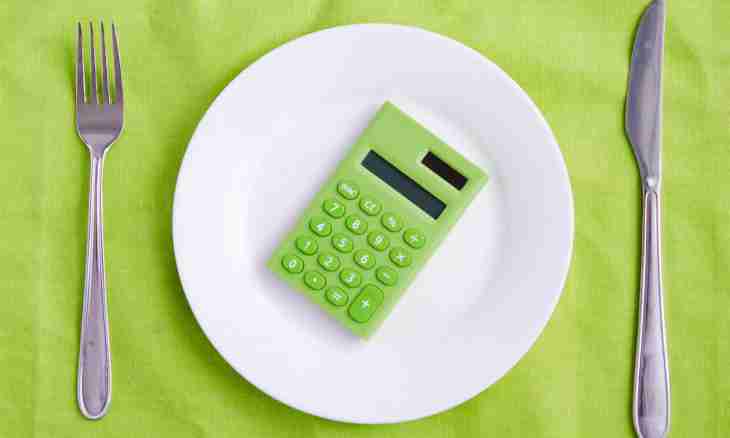Desire to lose weight can't be carried out without strict diet. Doesn't mean "hungry", but such at which you will carefully watch a calorie intake and not to exceed the established norm. For this purpose you should learn to count the caloric content of difficult dishes or to eat very monotonously.
Calculation of calories – the whole science
To control the power diet, you need to count the calories eaten in a day constantly. This important condition of the majority of diets and power supply systems. It is simple count the caloric content of simple sandwich or a plate of porridge. It is worth looking in literature or on the culinary website in network at an exit of calories of white loaf and oil or buckwheat. And by means of electronic kitchen scales or an eye estimation (that is undesirable) and the calculator to commit simple calculation. And here to find out how many calories contain in a difficult dish with many ingredients and difficult preparation – borsch, ragout, east pilaf, the stuffed pike and so forth – the whole science.
It is possible to go in rather simple way and to cook only those dishes in which compounding the exact number of calories is specified 100 g of a ready-made product. But each hostess has the "prescription bank" which got to her by inheritance from numerous relatives and girlfriends. Because it is difficult to refuse such "wealth" and house can go on strike, it is worth mastering nevertheless the diploma of independent calculation of calories of any, even very difficult dish. Especially as you should count once, and will be able regularly to train him you.
As for food in cafe and restaurant, in the menu there is always a column of an exit of a dish. There all ingredients and their weight in grams are specified. And on a visit it is possible to ask the recipe for the hostess. Both it is pleasant to her, and you advantage.
How to consider calories
Rule 1 - such products as water, seasonings (only natural spices in pure form), salt, tea and coffee of caloric content have no. Rule 2 – add to a dish only 20% of caloric content of the oil used when frying animal protein (meat, fish, an offal) since 80% of oil will remain in a frying pan. If oil is included into gravy, then you consider all 100%. Rule 3 – when frying vegetables and mushrooms oil is completely absorbed in a product, t. it is necessary to add all 100% of the used oil h. Rule 4 – when cooking meat and fish lose 20% of caloric content. She goes to broth. It is important when meat and broth are used for different dishes. Rule 5 – cooking of vegetables takes away from them 20% of caloric content. She also goes to broth. Therefore for soup this calculation won't be necessary. It is important only when using vegetables for salads and other dishes. Rule 6 – when roasting in an oven all products keep the caloric content completely. Rule 7 is the caloric content of grain and pasta on packing it is specified in a dry form. When cooking the weight of a product increases approximately three times. Therefore the caloric content of a ready-to-eat meal will be less too three times. An exception is semolina which boils soft approximately by 10 times. Rule 8 is the caloric content of the ready-to-eat meat and fish dishes prepared on naked flame or coals (shish kebabs) increases by 20%. Rule 9 – at preparation of a difficult dish, for example, of soup, at first calories and weight of all ingredients are considered. Then water in a pan is weighed. If it is meat soup – its caloric content is calculated. The weight of water and weight of all products is summarized. All counted calories are also summarized. For example, the total weight of soup is 5050 g, and the general caloric content of all ingredients is 2045 kcal. Simple formula: 5050 g = 2045 kcal; 100 g of soup = 100х2045/5050=40.5 kcal. A conclusion – soup 40.5 caloric content kal/100.

